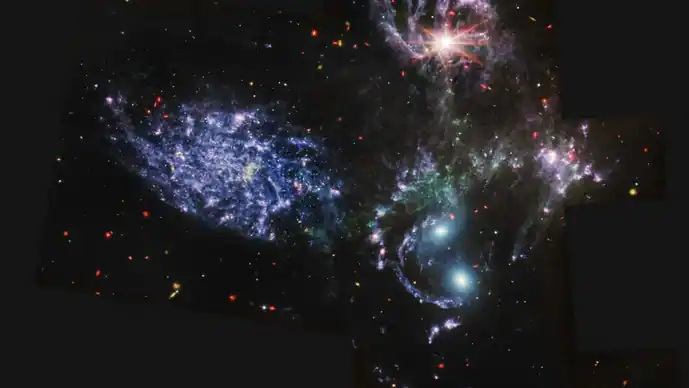
The strong jet of the supermasi -black hole changes the condition for the formation of stars in inter -star clouds.
It is believed that the supermasi -black hole is located in the center of most galaxies in our universe. When the particles that befall the black hole are trapped by the magnetic field, they can be removed out and traveling far inside the galaxy in the form of a very large and strong plasma jet. This jet is often perpendicular to the galaxy disk. However, in IC 5063, galaxy 156 million light years, jets actually propagated in the disk, interacting with cold and solid molecular gas clouds. From this interaction, cloud compression affected by the jet is ordered to be possible, which leads to the instability of gravity and ultimately the formation of stars due to gas condensation.
For experiments, the team uses carbon monoxide emissions (CO) and formal cation (HCO) provided by Alma, and ionized sulfur emissions and ionized nitrogen provided by VLT. They then use sophisticated and innovative Astrochemical and innovative algorithms to determine environmental conditions in outflow and surrounding media. This environmental condition contains information about the strength of the radiation of the distant stars, the rate at which particles are relatively charged to ionize gas, and mechanical energy deposited in gas by jet. Narrowing this condition reveals the density and temperature of the descriptive gas from various parts of this galaxy, which is then used to put pressure.
“We have carried out thousands of astrochemical simulations to cover various possibilities that might exist in IC 5063,” said colleague of the author Dr. Thomas Bisbas, DFG Fellow of the University of Cologne and a former postdoctoral researcher at the National Observatory of Athena. The challenging part of this job is carefully identifying as many physical obstacles as possible in the checked range that each parameter can have. “In this way, we can get an optimal combination of cloud physical parameters in various galaxy locations,” said colleague of the author. Georgos Filippos Paraschos, Ph.D. Students at the Max Planck Institute for Radio Astronomy at Bonn and former master students at the National Athens University and Kapodistian.
In fact, the pressure is not only measured for several locations in IC 5063. Conversely, this map and other amounts in the middle of this galaxy are made. This map allows the writer to visualize how the transition of the gas properties from one location to another because of the jet. The team is currently waiting for the next big step from this project: using the James Webb space telescope for further investigation of the pressure in the outer cloud layer, as investigated by the H2 warm. “We are really happy to get JWST data,” Professor Dasyra said, “because they will allow us to learn jet-cloud interactions at a very beautiful resolution.”













